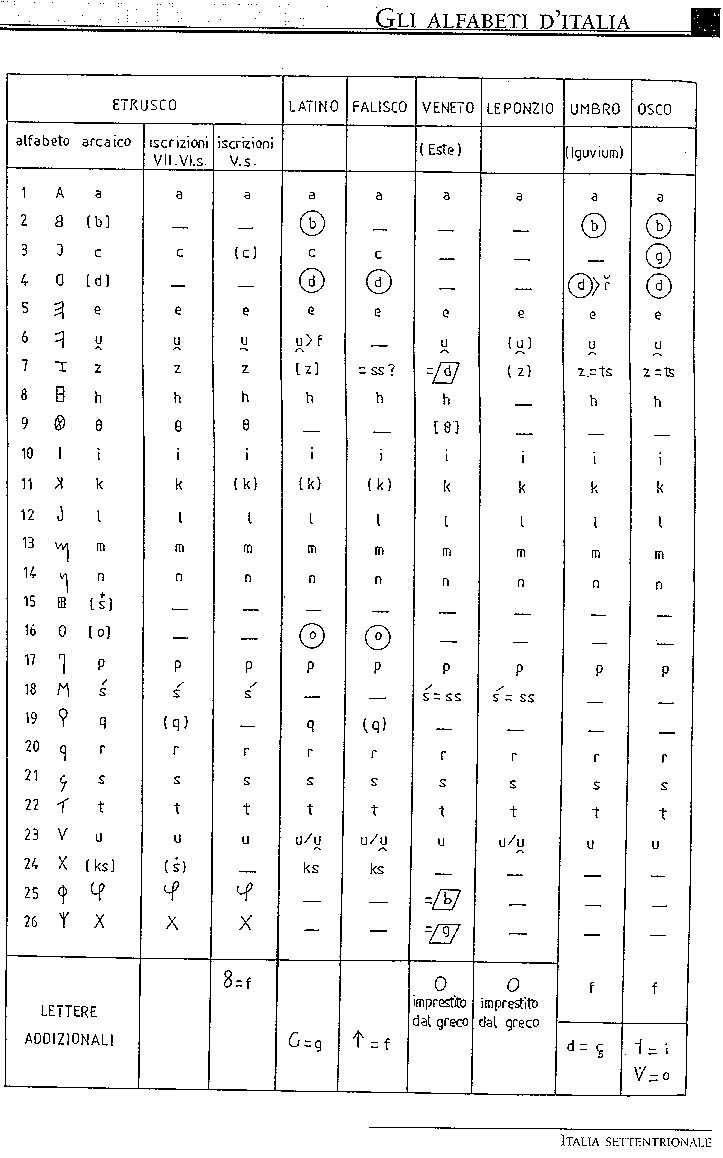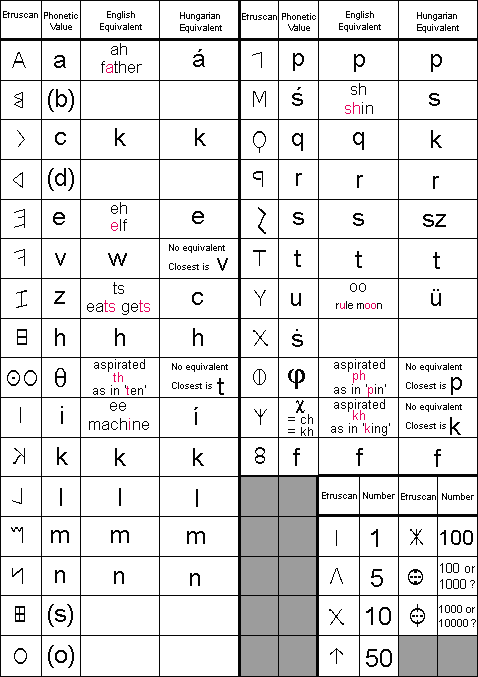@Vel Saties
Above all some general considerations.
In the first place I want to indicate that I am not a specialist in old Etruscan, although by some reasons I have studied a little this theme.
To seek information and material for the "Etruscan civilization for Civ III" (as well as for other "civs" that you can find in my web) I have consulted enough bibliographical documentation and varied webs. As you can imagine and verify, the results have been very diverse and even contradictory. Therefore I have had the obligation to decide necessarily among the multiple options and try to give to the whole of the "Etruscan Civ" a certain uniformity, always it holds to errors, as is it logical. (This is something that I comment in my web)
Finally, on the transcription of the Etruscan alphabets to other languages, like you will know, there are different opinions, that in some cases (not always) they depend on the nationality of the transcriptor.
A very important detail:
You say that you read the Etruscan inscriptions [mp68: 211], [az96], [g/lb83], etc... Without a doubt you are joking ¿isn't it? You could hardly have read something from those inscriptions because they are not inscriptions. Those are bibliographical references.
[mp68] refers to the edition from 1968 of the work "Etruscologia" by Massimo Pallottino, [az96] refers to the edition from 1996 of the work "I Documenti Etruschi" by Adolfo Zavaroni, [g/lb83] to the edition from 1983 of the work "The Etruscan Language: An Introduction" by Giuliano & Larissa Bonfante, etc.
Now let's see your objections:
"Where you found Zilath Mechl Rasnas?"
.(L)arisal Crespe Thanchvilus Pumpnal clan zilath (mechl) rasnas marunuch (cepe)n zilc thufi tenthas marunuch pachanati ril LXIII from "Testimonia Linguae Etruscae" de Massimo Pallottino. As you will know Massimo Pallottino is one of the greater world authorities in old Etruscan.
Really, along with
zilath mechl rasnas we can also find
zilath mexl rasnal,
zilath mekhl rasnal and
zilath mexl rasnas. This is due to the fact that on the one hand the sound /kh/ can be transcribed as "ch", "x" or "kh" (even, at times, "h") and on the other hand it is due to the double desinence that the Etruscan normally uses for the genitive (-s/-l/)
Before continuing, a comment. As I have said previously with reference to the sound /kh/ the Etruscan letters can be transcribed in different ways to other lenguages. We can see it in the image of the Etruscan alphabet that your you have put and in others that I will put down.
We observe the sixth letter. It is normally known like
digamma. It is true that the Etruscan digamma is generally transcribed "v", what is not yet this totally clear is which was the sound/s that it represented, nevertheless the majority of the etruscologists believe that sometimes it was /w/ bilabial, like the English w in woman or the Latin v in vincit, other times it was /v/ labiodental, like in English valour or in Italian vicino, and even others it was /f/ labiodental fricative, like in English factory. About the use of the digamma we also observe that diphthongs like au are frequently spelled av:
lautni>lavtni;
aule>avle.
Later I will explain my reasons to transcribe the
digamma as "u" but it remains thus clarified that it is possible/feasible to do it.
Let's continue then:
From
Pyrgi Lamellae you read
Thefariei Velianas. This is correct. But perhaps you have not read it complete, only the first tablet, therefore in the second tablet
nac Thefarie Veliiunas thamuce... appears also. In any case, the name of this personage generally admitted by the specialists is
Thefarie Velianas.
There are too many doubts on the Etruscan terminations in -enna/-ena/-inna/-ina to emit a final opinion. Observe that according to specialists, and they are even contradictory at times, it is used indistinctly
Ras(e)na/Rasenna // Porsena/Porsenna/Porsina // Spurina/Spurinna // Vipi(e)na(s)/Vipi(e)nna.
The correct etruscan name for Vulci is not known. We can find
Velcha /Velch /Velx /Velca /Velc /Velf/ Velcal/ Velcl/ Veic / (...?)
The correct etruscan name for Caere is not known. We can find
Chisra /Cisra /Caisra /Caisria /Chaire /Cheri /(...?)
The correct etruscan name for Vetulonia is not known. We can find
Vetluna /Vatluna /Vaitluna /Vatlna / Vetalu/ Vatlu/ (...?)
The correct etruscan name for Veii is not known. We can find
Vei /Veia /Veis/Veii/ (...?)
The correct etruscan name for Clusium is not known. We can find
Clevsin/ Clevsina/ Clevsi/ (...?)
The correct etruscan name for Volaterrae is not known. We can find
Velathri /Felathri/ Velauri/ (...?)
The correct etruscan name for Volsinii is not known. We can find
Velsna /Velzna/ Velsina /Velsu/ (...?)
Thus we would be able to continue with all the Etruscan cities. And thus we would be able to continue with almost all the referring thing to the old Etruscan. Affirming
so categorically what is correct thing or not in relation to a language that is known very little is a boldness, not to say another joke. The unique thing that we can do is to choose among the multiple possibilities that are offered to us and to try to justify our election in the better possible way.
This is my justification:
When I faced the need to transcribe to the Latin alphabet the terms written in Etruscan alphabet I thought that the best option was a phonetic transcription, but playing at the same time with an italic aspect and an eastern aspect.
The sounds that more problem presented to me were really /kh/ and /w/, also /k/, /z/ and /th/
In the case of /k/ I opted for "c" since the most extended one and at the same time I thought it related the Etruscan with the Latin. As a result of this, the sound /kh/ necessarily had to be "ch". I preferred to leave the sound /th/ as "th" to avoid the confusion with /z/ which I also opted to transcribe like "z" that is more usual.
The great doubt was the sound of digamma /w/, the options were "v", "w" or "u". Although the option "v" was the most logical (and the most extended one), it did not like me because it approached too much the Etruscan terms to the Latin above all after having determined to use "c" for /k/ and to maintain in some cases the ending -enna. The "w" seemed me excessively oriental and I already had used it for the "Hittite civ" and the "Egyptian civ". The "u" remained me then. And i liked, that gave to it the exotic look that I sought and so do not there would be any doubt relating to its pronunciation. And this is all... or almost all.

In any case, Vel Saties, I thank your objections because, although I do not agree with you, they have done me to return on the theme of the "Civs for the Sid Meyer's Civilization" (something that already I wanted to do) and to retouch some aspects that I will incorporate to my web.
@CivArmy
Excuse me for this long post in your thread, but I considered necessary to do these explanations. With the excuses receive again my congratulations so much by this work as for all the ones that you do for the "Civ World"

@All
Thanks a lot by your patience.












 I want see how Jecrell will find colors to everyone
I want see how Jecrell will find colors to everyone 


 I can use all this in a future version
I can use all this in a future version 





 Also, if you want to add another leader, there is Tarquin/Tarquinus the Proud (who was the last Etruscan king of Rome before the latins took over Rome).
Also, if you want to add another leader, there is Tarquin/Tarquinus the Proud (who was the last Etruscan king of Rome before the latins took over Rome).